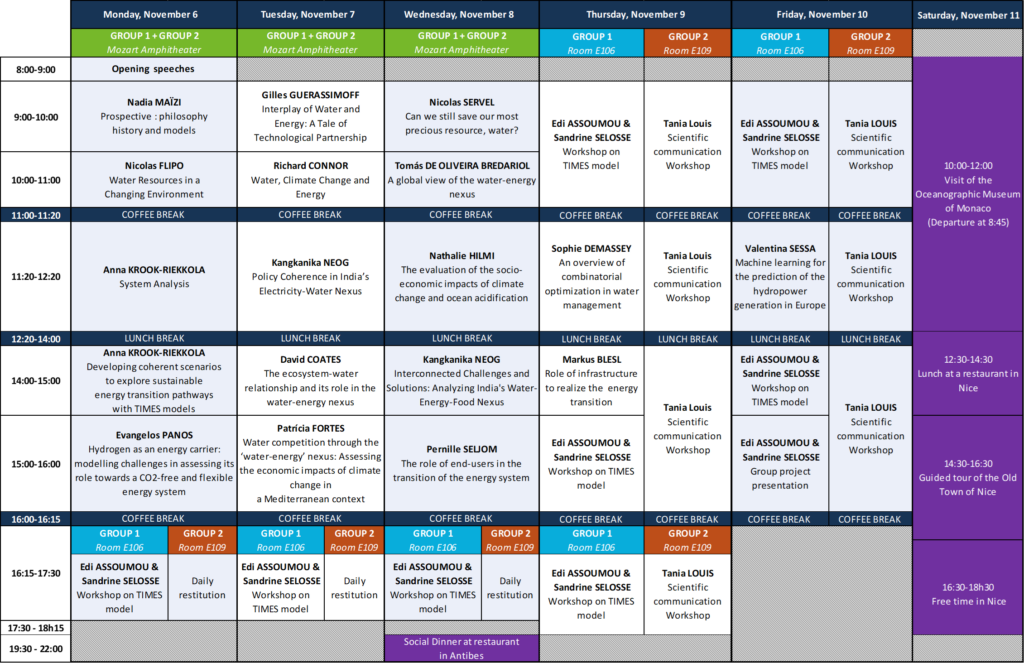The International Autumn School lasted five days (from Monday, November 6th, to Friday, November 11th) with five days of work and a day off. Activities included lectures and conferences, participant presentations, reading sessions, and group exercises. A social dinner was planned on Wednesday, November 8th, evening, and social activities were organized on Saturday, November 11th.
General lectures
The first three days were devoted to general lectures, presenting the challenges of prospective modeling, energy system issues, and the water-energy nexus. Some lectures were also devoted to introducing the TIMES family of models. Lectures presented various country perspectives on long-term energy and climate issues. At a different level, speakers emphasized the relevance of the water-energy nexus challenges.
Practical sessions on prospective modeling using TIMES models
Social Activity
On Saturday, November 11th, a day of social activity was organized. In the morning at 10 AM, a guided tour of the Oceanographic Museum of Monaco, in English, was offered. Then, the group headed to Nice for lunch at a traditional restaurant. Afterward, the historic center of downtown Nice was visited until around 4:30 PM.
All transportation to reach the various sites was covered.
Also, don’t hesitate to check out the faculty page, where you’ll find our scheduled speakers.
In the meantime, you can take a look at the Handbook of the 1st International Summer School on prospective modeling and energy transition, which contains a full account of the previous edition

The Organization team
This Autumn School is organized by Sabrina BEKLI, Claire CAUMEL, Naïma CHABOUNI, Lucas DESPORT, Alice SPASARO and Cédric STANGHELLINI.
Contact: tti.5@minesparis.psl.eu (with the e-mail object: Autumn School + Your first name and last name)
